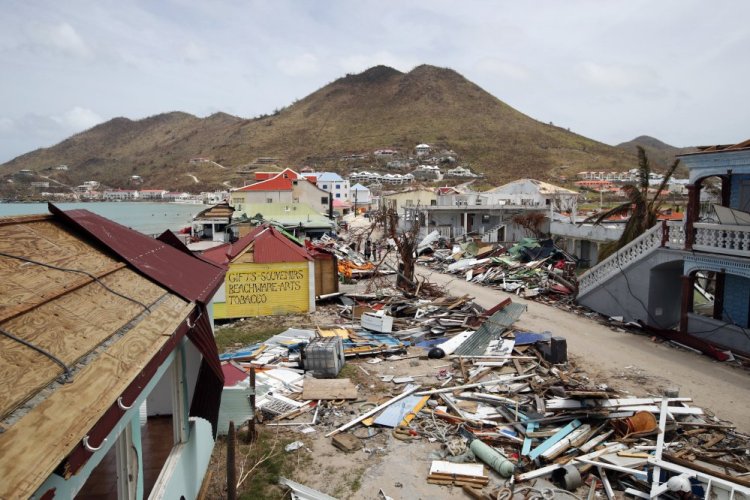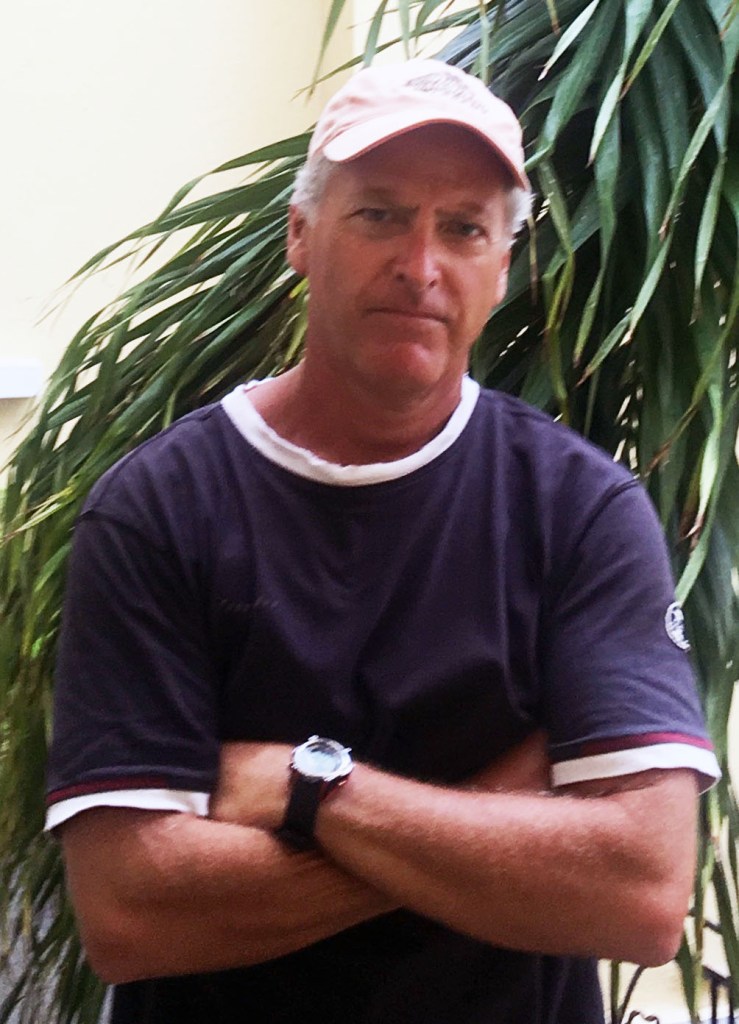Brunswick native Steve Morton has lived and worked in the U.S. Virgin Islands for 30 years, but nothing – not even prior hurricanes – had prepared him for what he experienced Sept. 6.
Morton is one of many Mainers who were in the Caribbean when Hurricane Irma struck, lashing the islands with sustained winds that at times exceeded 185 mph.
“I’ve been through a few big ones,” said Morton, who lives on St. Thomas. “This particular hurricane was unbelievable.”
Morton knew better than to wait out the hurricane at his home, which sits atop a hill. Instead, he hunkered down at a friend’s house with strong storm shutters.
“It was a terrifying night,” Morton said.
About 120 miles east in the Leeward Islands, second-year medical student Lisa MacVane spent the night with 200 other people huddled inside Building 2 on the American University of the Caribbean campus on St. Maarten. It’s the only building on campus that was built to withstand a Category 5 hurricane, said MacVane, a Windham native who now lives in Raymond.
Through one of the windows, she watched nearby palm trees bend to a 45-degree angle and then snap off at the base. One of them shot like a bullet into Building 2.
“It took a flying palm tree, and it didn’t even break the window,” MacVane said.
After the hurricane passed, Morton set out on foot for the downtown area where his home is located. It would have been impossible to traverse the 8 miles by car, he said, because all the roads were blocked by debris. While he walked, Morton stared in disbelief at the hurricane’s aftermath.
“It was like a doomsday movie,” he said. “The day after, it’s just nothing but blown-out homes, people walking around in a daze, downed power lines everywhere, smashed-up cars, a lot of flooding.”
The atmosphere downtown was tense as the shocked residents of St. Thomas waited helplessly for aid to arrive. When you live on an island, you can’t just drive 100 miles to the nearest city unaffected by the hurricane, Morton said. All the ports and airports get shut down. You’re stuck there.
“Those first few days after the storm, it’s a very difficult situation,” he said. “A lot of people on edge, a lot of people desperate for food, water. A lot of people looking for (shelter). It’s kind of scary.”
A strict 6 p.m. curfew was imposed throughout the island, Morton said. Troops and aid workers eventually arrived, and armed guards were posted outside businesses to prevent looting and maintain order.
Back at the university campus on St. Maarten, MacVane and her classmates were finally able to leave Building 2 in the afternoon to gather supplies and get some fresh air. They would be returning there to work and sleep for the next few days.
But first, MacVane headed for her home – and found it was no longer there.
“Where I live was just leveled,” she said. “It was completely torn down.”
When a hurricane makes landfall on the mainland, it immediately starts to slow down. That doesn’t happen on an island, MacVane said.
“An island doesn’t affect a hurricane at all,” she said. “It just keeps plowing right through.”
MacVane and her classmates didn’t have time to mourn the loss of their homes and possessions. As part of a medical school, they had a responsibility to help the many people in the community who had suffered storm-related injuries. They set up a medical station on the first floor of Building 2 and started treating wounds.
“It was mostly things like lacerations, where you stepped on a nail after the storm,” she said.
Finally on Monday, the university was able to charter a flight to Chicago, where MacVane and many of her classmates are now staying. Much of the St. Maarten campus was heavily damaged, so the school is trying to secure an alternate location to finish out the semester.
MacVane is grateful that the university had the foresight to construct at least one hurricane-proof structure. She plans to return to St. Maarten after the campus is repaired.
“They should honestly get an award for building that building,” she said.
For Morton, there are no plans to leave St. Thomas, even temporarily. Morton’s company manages commercial properties such as retail stores and office buildings. He said most of the commercial properties suffered only minor damage, but his home’s roof was partially torn off. He’s staying with a relative of his landlord for now.
Repairs to the community as a whole will take months, Morton said, and it’s likely that all tourism to St. Thomas will be shut down at least through the end of the year.
Still, both Morton and MacVane said the ordeal they went through with Irma would not deter them from living on their respective islands. Both were impressed by how island residents came together to help each other in the storm’s aftermath.
“I guess it’s part of living down here,” Morton said. “We’re going to be back to normal by the first of the year.”
J. Craig Anderson can be contacted at 791-6390 or at:
Twitter: jcraiganderson
Send questions/comments to the editors.




